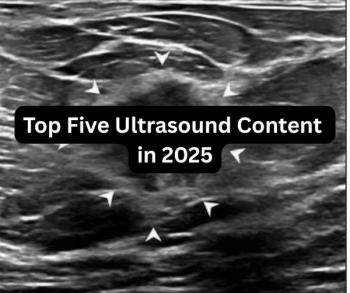
Ultrasound Aids in Management of Elbow Injuries
Point-of-care ultrasound, instead of CT, effective in diagnosis and management of elbow injuries.
Point-of-care ultrasound (POCUS) is effective in the diagnosis and management of elbow fractures when direct radiology is inconclusive and CT is required, according to a study published in
Researchers from Turkey sought to compare the efficiency of POCUS compared with CT for patients presenting with elbow injuries for both diagnosis and management of the fracture.
Forty-nine patients who presented with low energy elbow injuries and at least one fracture of the elbow participated in the study. Patient age ranged from five to 65, with a mean age 21. Sixty-three percent of all patients were male. All patients underwent direct radiology, followed by both ultrasound and CT. Emergency room physicians made treatment decisions based on the POCUS findings. The CT scans were then performed. Orthopedic surgeons made treatment decisions based on the CT results, interpreted by radiologists.
The results showed that compared with CT, POCUS was a valid method of imaging for fracture detection in elbow injuries:
In addition, while the sensitivity and specificity of POCUS in the decision for reduction was 95% and 100%, respectively, it was 93% and 100% in the decision for surgery.
“POCUS was shown to be successfully applied in the diagnosis and management of elbow injuries in which DR was inefficient and CT scans were required,” the researchers concluded.
Newsletter
Stay at the forefront of radiology with the Diagnostic Imaging newsletter, delivering the latest news, clinical insights, and imaging advancements for today’s radiologists.




























